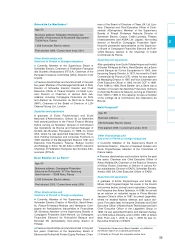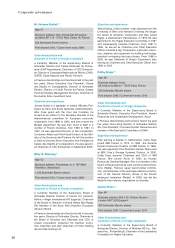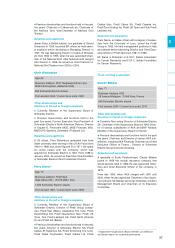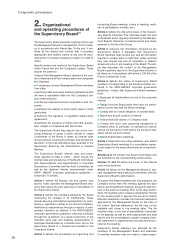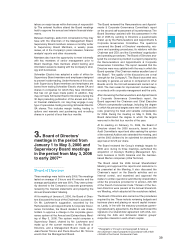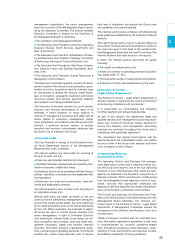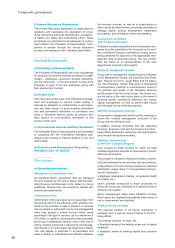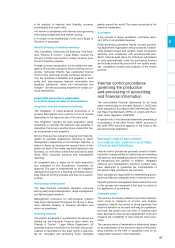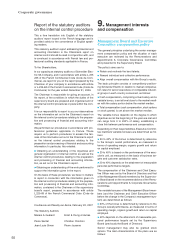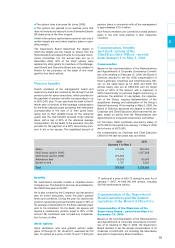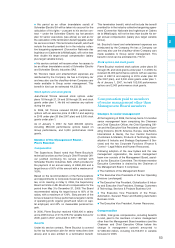APC 2006 Annual Report Download - page 47
Download and view the complete annual report
Please find page 47 of the 2006 APC annual report below. You can navigate through the pages in the report by either clicking on the pages listed below, or by using the keyword search tool below to find specific information within the annual report.
management organization, the senior management
team now consists of the Management Board, assist-
ed by the Executive Committee. The thirteen-member
Executive Committee is chaired by the Chairman of
the Management Board. It comprises:
The members of the Management Board.
The Executive Vice Presidents of the four Operating
Divisions (Europe, North America, Asia-Pacific and
Rest of the World).
The Executive Vice President, Globalization & Indus-
try and Executive Vice President, Strategy, Customers
& Technology, Services & Projects Business Unit
The Executive Vice Presidents of the Power, Automa-
tion, Secured Power and Building Automation Busi-
ness Units.
The Executive Vice President, Human Resources &
Managerial Communication.
The Executive Committee regularly reviews the devel-
opment outlook of the Group’s core businesses, oppor-
tunities for bolt-on acquisitions and the business case
for divestments. It reviews the Group’s overall strate-
gies, its innovation, geographic expansion and human
resources policies and policies governing relations
with research and training establishments.
The Executive Committee reviews the profit centers'
business and financial performance at each of its
meetings. It tracks progress on major projects to
improve IT management processes and deals with all
issues related to production management, supply
chain optimization and relations with partners and dis-
tributors. It performs ex-post reviews of product
launches and monitors technological advances that
are likely to be of interest to the Group.
c) Internal Audit
The Vice-President in charge of the 25-member Inter-
nal Audit Department reports to the Management
Board and the Audit Committee.
The internal auditors are responsible for ensuring at
the level of each unit that:
Risks are appropriately identified and managed.
Significant financial, management and operating infor-
mation
is accurate, reliable and timely.
Employees' actions are in compliance with the Group's
policies, standards, procedures and the applicable laws
and regulations.
Resources are acquired economically, used effi-
ciently and adequately protected.
The internal auditors carry out their work according to
an adjustable annual plan.
Internal audit plans are drawn up based on risk and
control concerns identified by management, taking into
account the results of past audits, the work performed
by the external Auditors and control self-assessments
by the units. When necessary, the audit plan is adjust-
ed during the year to include special requests from
senior management. In light of Schneider Electric’s
core businesses, internal audits focus mainly on rev-
enue recognition and contracts, cash and asset man-
agement processes, wages and benefits, financial
reporting, information systems, manufacturing opera-
tions, purchasing and operating expenses.The internal
auditors also review newly-acquired units to assess
their level of integration and ensure that Group rules
and guidelines are properly applied.
The internal audit process complies with international
audit guidelines established by the Institute of Internal
Auditors.
After each internal audit, a report is issued setting out
the auditors’ findings and recommendations. Copies of
the report are given to the head of the audited entity,
the Management Board and the Audit Committee. The
external Auditors also have access to the reports.
In 2006, the internal auditors performed 25 audits,
including:
Full audits of medium-sized units.
Audits of a number of operating processes (purchas-
ing, supply chain, IT, etc.).
Post-acquisition audits of newly-acquired companies.
Analyses of control self-assessments by the units.
d) Finance & Control –
Legal Affairs Department
The Finance & Control - Legal Affairs Department is
actively involved in organizing the control environment
and ensuring compliance with procedures.
It is responsible for consolidating and analyzing
monthly, quarterly and annual financial data.
As part of this mission, the department drafts and
updates statutory and management accounting proce-
dures (see "Control Procedures" below) designed to
ensure that statutory and management accounting
practices are consistent throughout the Group and in
compliance with applicable regulations.
The department has regular conversations with the
external Auditors. All consolidated entities are audited
by one or other of the Group’s two external audit firms
or by a member of their network.
e) Operating Divisions
and Business Units
The Operating Division and Business Unit manage-
ment teams play a critical role in effective internal con-
trol. All Group units report to one of the four Operating
Divisions or one of the Business Units, which are man-
aged by an Executive Vice-President, supported by a
financial controller. Within each Division and Business
Unit, the management team organizes control of oper-
ations, ensures that appropriate strategies are
deployed to achieve objectives and tracks the perform-
ance of the Division’s or Business Unit’s entities.
The Division and Business Unit Executive Vice Presi-
dents sit on the Executive Committee and report to the
Management Board Chairman. The financial con-
trollers report to the Finance & Control - Legal Affairs
department. A Management Committee reviews the
transactions of the Divisions and Business Units on a
monthly basis.
Thanks to frequent contacts with the corporate func-
tions, this matrix organization guarantees a high level
of responsiveness as concerns operations-related
risks, through the presence of local managers, under-
standing of local environments and business models,
and effective application of Group guidelines.
45
2


